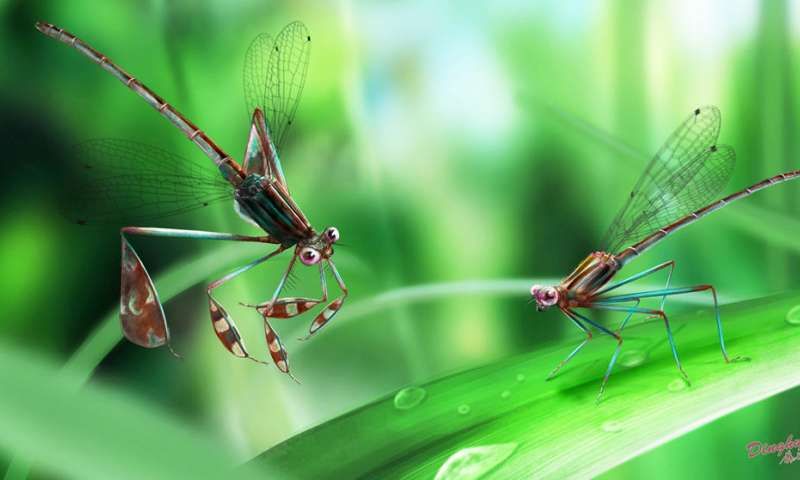Flirtatious 100-Million-Year-Old Damselflies Found Frozen in Amber
Scientists are learning about how insects evolved from their ancient come-hither dance
/https://tf-cmsv2-smithsonianmag-media.s3.amazonaws.com/filer/94/dc/94dc3224-9e8a-4036-80d3-3976a53b7230/damselfly.jpg)
From desperate pick-up lines to silly dances, we’re all guilty of engaging in some weird mating rituals as we try to attract that special someone. But what if those behaviors were frozen in time for future scientists to study? That’s what happened to three 100-million-year-old male damselflies, which gave scientists a peek into the courtship behaviors of these ancient creatures.
A group of Chinese scientists discovered the 100-million-year-old damselflies—insects similar to dragonflies—in the Hukawng Valley of Kachin Province, Myanmar. Yet the exact species had never been seen before. The scientists gave them the scientific name Yijenplatycnemis huangi, recently describing the find in the journal Scientific Reports.
The damselflies’ age was impressive enough, but what was even more striking was what they were doing when they got trapped in the resin that eventually formed their amber tomb. They seemed to be waving their legs—limbs that evolved especially to attract female damselflies.
In a press release, the researchers described their legs as nothing short of “spectacular.” They think that the expanded, pod-like, striped legs would have caught the attention of females—and since dragonflies have great eyesight, it stands to reason that lady damselflies would have noticed the display. The leg patterns seem to have served the same function as the eyes on peacocks’ feathers: making males irresistible to the opposite sex.

The researchers admit that they don’t know for sure if the legs were used to attract sexual partners; they could have been used to help males deflect attacks to other, less vulnerable body parts or even scare off would-be predators. But given the fact that all three of the males had those fancy legs intact, they infer that they were used for the fine art of insect love instead.
“Clearly, these leg flags were used for signaling to potential mates,” David Grimaldi, a paleoentomologist specializing in amber and a curator at the American Museum of Natural History, tells Smithsonian.com via email. “Whether they were used during flight or while perched is speculation.”
Grimaldi, who was not involved in the current study, found a male specimen of the same damselfly in Burmese amber five years ago but never published on the research. It’s “unlike anything found in damselflies and dragonflies today,” he says—and is a great example of how different sexes develop differently to help along courtship.
“When people think of ancient life, they tend to think of basic evolutionary forms, not highly specialized ones,” Grimaldi adds. “In reality, a species can be both an early or ancestral lineage and also have weird, specialized features.”
The find leaves a lot of questions unanswered, like whether the males got the attention of nearby females while showing a little leg. But it shows that even 100 million years ago, insects could have evolved to be more attractive to the opposite sex.
/https://tf-cmsv2-smithsonianmag-media.s3.amazonaws.com/accounts/headshot/erin.png)
/https://tf-cmsv2-smithsonianmag-media.s3.amazonaws.com/accounts/headshot/erin.png)